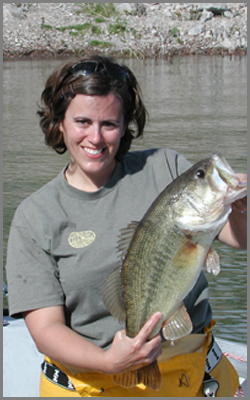











Research Team >> M.Sc. Alumni >> Marianne Meding
Marianne Meding (1999-2000)

|
Marianne holds the record for the shortest, and possibly the toughest, M.Sc. program from the Jackson Lab. She completed her program in 18 months, including two winter field seasons where she measured dissolved oxygen under ice in shallow prairie lakes. Her largest challenge was keeping the DO meter membrane from freezing in - 30 C temperatures. Marianne considered the role of phytoplankton and macrophytes as organic C sources that drive the rate of anoxia development under ice in shallow lakes. Anoxia kills fish, which alters food web structure, and affects water clarity and shallow lake state (clear or turbid). Marianne did some nice empirical modelling of oxygen decay rates, and corrleated the empirically-derived decay rates to carbon sources. You can read more about Marianne's research in: Meding ME & LJ Jackson (2003) Biotic, chemical, and morphometric factors contributing to winter anoxia in prairie lakes. Limnology & Oceanography 48: 1633-1642, and Meding ME & LJ Jackson (2001) Biological implications of empirical models of winter oxygen depletion. Canadian Journal of Fisheries and Aquatic Sciences 58: 1727-1736. |
